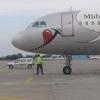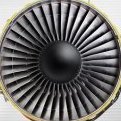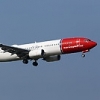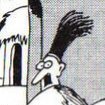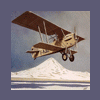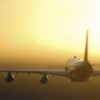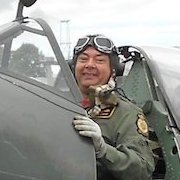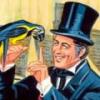Search the Community
Showing results for tags 'boeing'.
-
Hello folks, anyone planning decals for the new Qantas retro scheme? Looks great. http://www.airliners.net/photo/Qantas/Boeing-737-838/2733726/L/ Looking at you Ray... (please) Cheers, Andrew
- 17 replies
-
- 1
-

-
- Qantas
- Retro Roo II
- (and 4 more)
-
Hi there, After the Air New Zealand A320 decals, Attach Before Flight has released another two decal sheets, this time for Azerbaijan Airlines: These two, just like the ANZ sheet are printed by BOA in the Czech Republic. I have bought the A320 sheet because some of these jets had/ have a bit of extra colour, carrying titles for the 1st European Games held in Azerbaijan's capital Baku in 2015. Maybe I'll go for a double build: Azerbaijan A320 and Indian Airlines A320... Cheers, Niki
- 2 replies
-
- 1/144
- azerbaijan
-
(and 8 more)
Tagged with:
-
Check out the new Zvezda 2015 catalogue http://scalemodels.ru/modules/news/img_8359_1419369777_Catalogue_2015_Cover_22_000021.jpg.html Can't wait!! Could a 757 and an MD-11 be a possibility now? Ian
-
New Airfix 707-436 in BOAC colours. Nice build excpet a lot of trimming needed of excess plastic. Also a word of warning- DO NOT use old spray varnish if it starts coming out like syrup! it makes a mess had to redo the white cos of it.
- 23 replies
-
- 22
-

-
...that next to the engines, that is! Hi chaps, I was just browsing through Pointerdog7's decal list and from doing a bit of on-line research I got to discover this picture: http://commons.wikimedia.org/wiki/File:Uganda_Airlines_Boeing_707_Groves-1.jpg Can anyone please tell me what that pod hanging near the wing to fuselage join is? Was there another example hanging on the opposite side? Any detail pictures of it anywhere? I was pondering about what livery to use on my first 707 and this looks kind of interesting. I also noticed that there were at least two slightly different liveries worn by Uganda Airlines 707s: the one pictured above and this: Is the livery as shown by the Pointerdog decals the second (final) one? Any idea what year the font and tail design got changed? Thank you! Cheers, Niki
-
It seems I finally found a perfect place for photo sessions Dragon "cutaway" kit with TwoSix decals. Mostly out of the box
-
Hello everyone, This is my first building report on this forum. I am building the standard Revell Boeing 737-800, but with the quite extraordinary 'Flying 101' paint scheme from Kulula, a South African airline. I will fill and remove the panel lines on the fuselage as an experiment to see if that looks good, and maybe I will draw some of them back on with a pencil after painting. I'll leave the lines on the wings as they are, though. The winglets in Revell's kit are horrible, but I have not used aftermarket replacements. I simply made them a bit slimmer and didn't heighten them. I am also aware that the cabin windows are molded too low on the fuselage, but I like to leave the windows open instead of filling them so I'll just have to accept that. Now for my work so far: With a few layers of primer... I think I'll do it again with grey primer to get an even colour, and then with white again. I put some pieces of stretched sprue in the back of the engine to make it a bit less empty and monotone. And I also filed the fins on the sides of the engine to make them thinner
-
Boeing Vertol CH-46 Sea Knight, aircraft is actually the UH-46 USN Medium-lift utility transport helicopter. Pics thanks to Stephen.
-
Boeing P-8 Poseidon, pics thanks to Frank.
-
I've been having a tidy up weekend trying to complete all those 'nearly finished' models lurking around the workbench, and there are about 8 of them. I had two 737's that were almost finished in the Christmas holidays, and have been waiting for the final bits. I have been working my way through building one of each of the New Generation Boeing 737's, which is a complete redesign of the classic Boeing 737 100, 200, 300, 400, and 500 series airliner. It features new engines, new wings, tail and undercarriage amongst other things, and has very little in common with the Classic. The NG starts with the shortest variant, the 600, and has a progressively larger fuselage through the 700, 800 and 900. Revell do a kit of the 800 which is not bad but requires mods to the engines and winglets, and the window line is too low so they need filling and repalcing with decals. To make a 700 and a 900 I used two kits cut up at the same time. Basically what you do is cut one fuselage into 3, making the cuts close to the leading and trailing edges of the wing. On the other fuselage you make the cuts as far from the wing as you can. Then by swapping the two centre sections, you have a long fuselage and a short fuselage. Obviously you do it by accurate measuring, I'm only trying to simplify the description here. (Edit - All 4 models here are built from the Revell 737-800 kit, with shortened/lengthened fuselages) Anyway, I ended up with a 700 and a 900 series fuselage. Both were built side by side. The 700 has Skyeurope decals by Boa Agency. That paint job involved a lot of fiddly masking, the blue, white, and red fuselage & engines are all masked & sprayed. For a while they featured famous Slovakian beauties, this one is Adriana Karembeu The 900 is in KLM coluurs using Draw decals, and very good they are. Here they are, for comparison I have included previuosly build 600 and 800 models. The 700; Biggest of the lot, the 900; An 800 in Kulula livery, Draw decals. The shortest of the lot, a 600 in SAS livery from Lima November decals Not easy to photograph in a line up, apologies for the poor pictures. Left to right 900, 800, 700, and 600. Thanks for looking, John
- 31 replies
-
- 14
-

-
A very very long time ago I started on a B737-200 I wanted to set myself a challenge so I decided on a project to build a B737-200 Combi fitted with a gravel kit etc. and with all the doors open being loaded up in the snow of the Canadian north....... Over a few weeks I collected together a kit, some AM stuff etc. as a starting point: The Airfix engines are known to be a poor representation of the -200 engines (narrow pylons being the first issue!) hence the braz resin engines. All was well until I looked at the Braz engines in the above shot.... which had degraded silicon bits from the mold down their tail-pipes... not good! but Hannants were their excellent selves and we quickly determined that all 2 of their remaining stock had the same issue so they went back for a refund. A bit more online retail therapy and I had some Nazca decals and the authentic airliners resin engines (lovelly things): I know the extratech PE is for a different model of B737 but I was using it for the common parts.... A few weeks later after some scratch interior building, cutting a cargo door opening and I was thinking about the cargo door itself: But in the end the windows just didn't look right and the internal detail on the whole aircraft was poor, the windows are in the wrong place on the model, the doors are wrong and the nose shape and cockpit windows are also way off..... Skip forward 3 years and I started using 3D printing at work to build replicas of skulls (useful for teaching anatomy). I've been modelling aircraft in 3D programmes for years (used to sell them for flight simulators) and remembered I had a 727 model somewhere.... the fuselage isn't that different so it might be easy to adapt it to make a 737-200. Skip forward another year of messing around in Blender, 3DStudioMax, ZBrush, Polyworks, Rhino and all manner of other 3D programmes I work with and I had a set of STL models that I was happy with. So this Christmas I borrowed our newest 3D printer from work and this is what we get: These are my external shape masters.... but there was a problem. It was cold the day I went out and left these to print (18hour print time at 40micron layer size) and I wasn't thorough enough with the glue (pritstick) on the glass build plate so I ended up with the left side's nose lifting off the build plate and warping (bugger!): Now printing a new left side wasn't an issue but it takes a lot of plastic and 9 and a bit hours! so a quick edit in blender and I printed off just the nose section from just forward of the left door: Might have been a bit OTT with the glue this time as it took 3 hours soaking in warm soapy water to get the damn print off the glass! Next up: how to perform rhinoplasty (nosejob) on a 737.... Marked up and chopped off the dodgy nose: Lined up and glued the new nose on using the right hand side as a guide: A bit of Perfect Plastic Putty (wonderful stuff!): Have just sanded off the excess filler and it all looks spot on. Next up printing the internal details masters, molding them all in silicon and then casting the rough resin detail masters from these molds. I'll then add all the small details, panel lines etc. on those resin casts as the 3D printer plastic is very hard and therefore difficult to sand etc. More later. FB
- 17 replies
-
- 5
-

-
- 3D Printing
- Scratch
-
(and 3 more)
Tagged with:
-
Hello all, Whilst I still have to finish my Spitfire build, thought I'd purchase more models ahead of the Christmas rush! Was so excited when I picked up the intercom and heard "Hello, I have a package for your flat." I did a very quick celebration and ran down to get my stuff. My first airliner scale model kits ever! Anyway, the unboxing of these kits is here: Around mid-late December is when I'll be building these, so do stay tuned! Hope you enjoy it! Regards, Hamdhan
-
I picked up the Airfix kit from the stash to have a look at it as I'm contemplating the idea of making the Stratovision aircraft. The kit is better than I remembered, although it seems to have the wing leading edges too blunt (leave as is...). However, looking at some photos, the engine nacelles seems to be not vertical (as depicted in the kit) but perpendicular to the wing middle line. I don't remember to read about this in any review. Look at the this photo: http://www.40thbombgroup.org/images/Schutte/Katie1.jpg Can it be an illusion? How's the Academy kit is this detail? And is it much better than the Airfix one? Thanks for any help. Carlos
-
Hello all, Here is my first topic, and it is about my last model, a B727 from the new Airfix kit. I used Continental Micronesia decals. I bought them on F-dcal, and I was satisfied by the quality. I did not pay a special attention to the accuracy of the model, thus I didn't make major changes on the plastic kit (to be honest I wanted to finish it rather quickly). Yet I know some details are not reproduced (on the wings and the gears). I chose to glaze the windscreen and the windows instead of filling and adding the decals. Only I didn't use the small Airfix clear parts, but placed plastic sheet and Clearfix. Here again you will notice it's not perfect (first time I try it). Continental Micronesia was founded in 1968 (as Air Micronesia) and ceased its operations in 2010, when Continental merged with United. It used to have routes to Hawaii, Asia (mainly, if not only, Japan) , Micronesia and Australia as well as it was island hopping. The paint job is done with brush for all colors except white, which is Tamiya Gloss White. I obtain a glossier finished by spraying a grey primer (Tamiya too) instead of a white one. The paint job "pattern" on the wing is done a little bit randomly because there wasn't many pictures on the internet. I had made the 3 Pitot tubes but my little brother broke them ... I hope you will enjoy. (I will probably prepare a diorama+backround for my next models ...) Cheers, Jean
- 11 replies
-
- 11
-

-
This is the hasegawa kit. Liveries Unlimited Decals. Model represents Emirates' second 777-200, A6-EME, delivered in 1996 and still in the fleet. 1 by Billy Wilt بيلي الذبول, on Flickr 2 by Billy Wilt بيلي الذبول, on Flickr 3 by Billy Wilt بيلي الذبول, on Flickr 4 by Billy Wilt بيلي الذبول, on Flickr 5 by Billy Wilt بيلي الذبول, on Flickr 6 by Billy Wilt بيلي الذبول, on Flickr 7 by Billy Wilt بيلي الذبول, on Flickr 8 by Billy Wilt بيلي الذبول, on Flickr 9 by Billy Wilt بيلي الذبول, on Flickr 10 by Billy Wilt بيلي الذبول, on Flickr 11 by Billy Wilt بيلي الذبول, on Flickr
- 19 replies
-
- 12
-

-
Boeing 737-200 1:72 BPK Whilst Boeing was achieving considerable success with the larger 707 and 727 in the 60’s, development of the BAC 1-11, DC-9 and Fokker F.28 were progressing well to serve an anticipated need in the world market for smaller aircraft on short haul routes. In 1964, Boeing proposed their intention to tap into this market. To keep timescales down, they proposed a design that would use 60% of the structure and systems of the 727 which would also benefit by keep costs to a minimum. The 727 cabin had an advantage over its potential rivals in that it accommodated six abreast seating compared to a maximum of 5 abreast on the others. Another feature of the 737 would be its capability for Cat 2 Landings, the first of its kind. Production of the 737 was guaranteed following an order by Lufthansa for 21 100 seater aircraft, the first of which went into service in 1968. A follow up order came from United Airlines for another 40 aircraft; however they wanted a larger aircraft that would become the 200 series. Further refinements to the 737 200 led to the refined 737-200 Advanced which included improved thrust reversers, modified flaps, more powerful engines and greater fuel capacity allowing a 15% increase in payload. This became the ‘standard’ configuration by 1971. A lull in orders in 1970 drove Boeing to offer greater diversity in the design. Versions included the 737C (meaning convertible passenger / freight version) using a large freight access door, 737QC (Quick change which had palletised seats allowing quick removal) and the gravel kit equipped model for use on unpaved runways. Production of the 200 series continued until 1988 when no less that 1,114 aircraft were produced and served hundreds of airlines around the world and in 2010, over 300 were still in operation! The kit News of this release from BPK of Ukraine has been popular and when I received mine, I could see why. The only other 737-200 model in this scale is the multi-media kit from Welsh models with a vac formed fuselage. The kit comes in a sturdy top opening box and inside you’ll find a lot more parts than you’ll be used to if 1/144 is normally your scale. The version represented is the ‘Advanced’ model with refined details as mentioned above so can be built into a vast amount of livery options as and when they become available. First impressions are very good, but not mainstream. There’s an absence of locating pins where you would expect them on a mainstream kit, so some additional skill and patience will be required to deal with this, but don’t let that put you off. Included in the set is over 100 injection moulded parts, additional resin & etch, rubber tyres and cockpit and cabin window masks. A great feature too is the clear nose section meaning that you won’t be left with the challenge of trying to prevent glue marks on your cockpit windows! There is no flash or sink marks to be found on any of the parts. Included on the sprues but identified as not used in the instructions are what look to be the gravel pack parts, so we could expect further versions to be released. The instructions are in A4 gloss paper and mostly adequate, however there are a few ambiguities that I’ll cover in the review. Assembly starts with the cockpit. In here you will find all major features including seats, side, front and overhead panels, centre console, control columns and decals to add the necessary detail. The cockpit assembly locates to the rear bulkhead and it all fits into the transparent nose which on first impressions captures the shape very well. The next step for the cabin windows requires a decision from yourself and reflects in my opinion some clever design work to give you these options. The cabin windows for each side are provided as clear strips that locate into the fuselage halves with finely marked windows. The kit is supplied without window decals that you typically find in aftermarket decal sets, so you will be required to cut the plastic out of the fuselage parts and replace them with the clear strips. If you intend to use decal windows that will probably become available from aftermarket suppliers, you could simply glue the clear strips over the top of the indented sections although one side will need a raised bead sanding or dremmeling down as noticed in the picture below. Doing this enables the clear parts to sit flush with the exterior surface. Leaving the indented sections in place and painting it with a dark colour before inserting the clear strips and masking the windows may also be an option to consider. If you do decide to remove the indented plastic, leaving some of it in as a locating surface for the clear parts would be advisable as long as it doesn’t foul the windows. The surface detailing in the fuselage is very nicely done with fine recessed details. Moving on to the next build assembly and we have the main gear bays and wing box that locates in to the lower fuselage. Two spars are added as well as adequate gear bay detailing that adds plenty of interest. You may want to add some additional plumbing here if you like a lot of detail. The spars protrude out of the wing box to support the wings when fitted. With the main parts of the fuselage assembled, it’s all brought together – fuselage halves joined and cockpit, wing box, nose and tail cones attached. Again without the benefit of locating pins, be careful to get everything aligned correctly. Here I noticed a few things missing from the instructions. One of the last stages is to add the nose wheel bay, but to do so, you need to cut away part of the clear nose and fuselage halves to do so. It will be easier to do this before you assemble the fuselage. No mention is made of nose weights either, so I’d play safe and stick some metal up front too whilst you’re there. This may be obvious to some, but I’m one of those who steams ahead and pays the price later for my impatience!!! Onto the wing assembly. This is a simple affair; the wings are supplied in top and bottom halves with the gear bays to be inserted as separate parts. As these will take the weight of the kit when sitting on the gear, I’d recommend plenty of glue here to prevent them from breaking loose under load. Separate flap jack fairings are supplied and simply fit to the lower wings. The tail and tail planes follow the same two halved approach with a small spacer to be inserted between the tail halves to offer some rigidity. Detailing in the engines is well catered for. The intake fan is mated to an etch IGV (inlet guide vanes) part that requires the vanes to be twisted through 90 degrees and the intake cone fitting to the IGV. These then mate to an injection moulded cylindrical insert that provides a smooth intake profile. The exhaust looks to be more challenging. Instead of using a plastic insert, the exhaust has to be made forming a flat sheet of brass plate into a cylinder. You may try to find some tubing of a suitable diameter to avoid doing this...I think I will! Resin exhaust compressors and exit cones are supplied to finish off the inner detailing. The undercarriage is quite a complex arrangement. Each main gear assembly is made up of no less than 6 parts excluding the wheels themselves. The nose wheel bay also has to be assembled from 5 parts, so you may want to reinforce the joints to prevent it from collapsing under the weight. The nose gear assembly contains a further 10 parts, so you may want to have a beer on standby for when you finish that off! The tyres are supplied as rubber which some dislike. I suspect that some aftermarket resin replacements may become available in due course. The tyres do have some small amounts of flash so this will need to be removed. The instructions for the main gear door assembly aren’t very clear, so I will be looking for some reference material when I come to build this to see exactly how the 3 parts fit together correctly. The etch sheet contains quite an array of exterior parts including wing root intakes and the various antennas and probes around the fuselage which is a welcome addition in 1/72 scale. A nice touch too is a front passenger door and port baggage doors supplied giving you the option of cutting the fuselage out and having the open doors. I see a good diorama possibility here. Unfortunately, the forward air stair isn’t included. The decals The decal set produced by Decograph is quite simple. I would of preferred a number of options but only one livery is included for Piedmont airlines; aircraft No. N780N which was delivered in 1980. This aircraft finally ceased operations as registration YI-APY in 2010 with Iraqi Airways. The sheet doesn’t include fuselage cheat lines, door frame markings or windows which again would have been useful for those who prefer that route. Masks are included to paint the door markings though. The cockpit panel decals are nicely detailed too. For those wanting some British liveries, keep an eye out of the Two-Six website as Ray has a number of options that he’s planning to release (as well as non-British liveries) including: Britannia 1970s & 80s British Airways Negus & Landor Dan Air London BA World liveries Air Europe Conclusion This is a welcome model of an iconic aircraft so will probably be popular amongst the airline modelling community. The detail is good and the shape looks accurate too from what I can see without assembling it. I suspect it will spur a number of aftermarket initiatives too. It’s not a kit for beginners, but nor does it require expert skills either. Judging by the release of the T-43 and the inclusion of the gravel pack parts, BPK are going to cover most if not all of the 200 series options in due course. Additional liveries and decal options would of been a good feature to add value, but overall I’m very impressed with what BPK have created. Review sample courtesy of
-
Well, I realise it's a bit late in the day to start a WIP on this one, but technically it's not finished yet, so here goes. I picked up this kit quite cheaply from Creative Models and I am quite pleased with it. 1/200 is not a scale I've built in before, but for aircraft of this size it still gives a fairly sizable model. On the whole, this is a good kit - fit is generally very good, with a couple of minor exceptions (wing halves). It looks pretty accurate to me, and unlike the Zvezda/Revell version includes separate parts for the Trent 1000 and GEnX engines (although to be honest the differences are quite subtle). The only error I have noted is the APU intake being moulded on the wrong side of the fin. Panel lines are a little on the heavy side, particularly on the fuselage. I had originally planned this as a LOT Polish Airlines aircraft, but having got two sets of decals (both laser printed) wasn't really all that happy with the resolution (being particularly picky really), so I've gone with the kit decals. Coincidentally, I also saw this aircraft when it visited the Farnborough Airshow back in 2010 when it did a flypast with two Spitfires (http://www.airliners.net/photo/Boeing/Boeing-787-8-Dreamliner/1745320/L/&sid=a9351297298616bba1b5f732614e8323). This is meant to be a quick (for me) build, so I've dispensed with the landing gear and done it in flight. It's painted in Tamiya acrylic spray and Alclad laquers for the leading edges/APU exhaust. Engines and stabilisers are still to be done, and it's still awaiting a clear gloss coat of some description: Untitled by Caution Wake Turbulence, on Flickr Untitled by Caution Wake Turbulence, on Flickr Untitled by Caution Wake Turbulence, on Flickr Untitled by Caution Wake Turbulence, on Flickr I still need to tidy up the tail decals a little. The kit decals are alright, if a little thick and on the matt side. Hope you like it! Cheers, Andrew
-
Hi all, Back again. I must admit it's been a while since I've posted any work on the site, due to a combination of taking over a mate's business with the corresponding increase of workload, a painful split with my longterm girlfriend, sessions working in the middle east and the fact that my current build is an absolute pig. Anyway, enough whinging. Some time ago I bought a Revell 1/144 Boeing 747, in the Lufthansa boxing. I'd always liked the look of the Jumbo, and when I was deciding what kit to start next, this presented itself. I decided I fancied a British Airways Landor version, which meant I had to look around for some BA markings, but while I was doing that I found an old Airfix BA Jumbo at a model show going for a tenner. Ideal - that'll solve the problem of the Revell kit having P+W engines when I need RB211s! Not so - the Airfix engines were pants, and the decals were scuffed beyond use. I ended up ordering a set of resin engines, and getting the BA markings from a swap with a fellow Britmodeller who was after a Laser dinghy. Right, after the dramas of sourcing the right bits, on with the build. The initial test fits didn't look promising. The underbelly had a distinct short shot look to it, meaning that the underseam was a bit see-through: The area which supported the undercart was also an ill fitting insert: It was around about now that I realised I needed so break out the filler on this build. Unfortunately, the rear APU exhaust was also a short shot: Oh well, on with the scratchbuilding. I decided that nothing would be visible on the flight deck, but was determined not to go down the route of blacking out the windows. To that end, I needed some sort of structure in there to prevent the see through effect. A simple card structure roughly painted black sufficed: I also glued several lead balls to this bulkhead to prevent tailsitting later. Once the fuselage was together, the windscreen was found to have wide gaps which had to be filled with shims made of plastic card. The area was then sanded flush and polished back to clarity. I took the precaution of laying masking tape over the transparent part and cutting out individual window masks before the frames were obliterated during sanding. These masks were then carefully transferred to a piece of plastic card for safekeeping and will be used to remask the windows for airbrushing the fuselage later. The current state of the windscreen is this: Also, the wings are on, and several rounds of PSR leads to this: The join was abysmal, and took a LOT of cleaning up and rescribing to get to this stage. Still, it's starting to look like a plane now: It's big, though. While the putty was drying on this, I worked on the engines. The resin ones from Bra.Z were nicely detailed, but as they come in two parts with the casting plug on the mating surfaces, getting the two parts to line up was a case of sanding a bit, testing, sanding a bit more, testing...four times over. Still, got there in the end: After a lot of masking and airbrushing, the Alclad Steel went on the fan blades, exhaust and the spinner, Aluminium went on the intake ring and the interior of the intake, Airframe Aluminium on the pylon, and Dark Aluminium was sprayed over the internal panels, carefully masked off to represent the darker areas seen on reference photos. The spinner tip was then given its matt black colour. I'm hoping to do the spiral on this with a white pencil, if I can get it pointy enough. Once the dark blue was on and the whole thing was given a coat of Klear, it looks like this: Still needs a black wash to give depth to the fan blades, I think. The wheels. Oh, the wheels. The moulds in the Revell kit were so old and worn out that mould slippage had resulted in the kit wheels resembling a badly assembled bagel: I had a choice of either doing it wheels up, or cannibalising the Airfix kit. C'mere, you...oh damn, the wheels are bigger than the Revell ones. So's the axle, which meant that I had to very carefully drill out the holes in the Revell bogies (the Airfix ones were nowhere near detailed enough) to accept the axles from the Airfix kit. Blimey, it's a right lash up this build, eh? The Revell undercart was painted Alclad Steel: And the Airfix wheels were sprayed Steel and then the hubs masked off using tiny punched discs of masking tape so that I could brush on my favourite tyre black, a colour which refuses to be airbrushed unfortunately: So there we are. At the moment, I've got the wings and tail painted in their Alclads, and the next step will be to get some colour on the fuselage. I'll keep you posted as to progress... Cheers, Dean
-
Hello All I'm in. I was going to build the Encore Albatros D.Va but I changed my mind. Got this a few years ago and can't emember the price but it was under $10 so definitely under £10. The decals are no good, but I have the Starfighter sheet for it, and one of the interplane struts is broken. I'm going to scratch together a bit of detail in the pit but other than that it should be pretty straightforward. The kit seems very nice, oh except for the behemoth of an ejection pin mark on the underside of the top wing. Cheers Segan
- 33 replies
-
- 7
-

-
Here are a few military movements noted during my very infrequent drive pasts over the last two or three years. 2011: 2012: 2013: 2014:
- 14 replies
-
- 4
-

-
- AgustaWestand EH-101
- Boeing
-
(and 1 more)
Tagged with:
-
Pics of the now sadly gone Liberty Belle by Colin Ruffles
-
Hello, just a quick question, does anyone know why this kit has a choice of two keel inserts? The second, unused, one appears to be thinner and lacks the lumps and bumps of the other one. Cheers, Andrew


